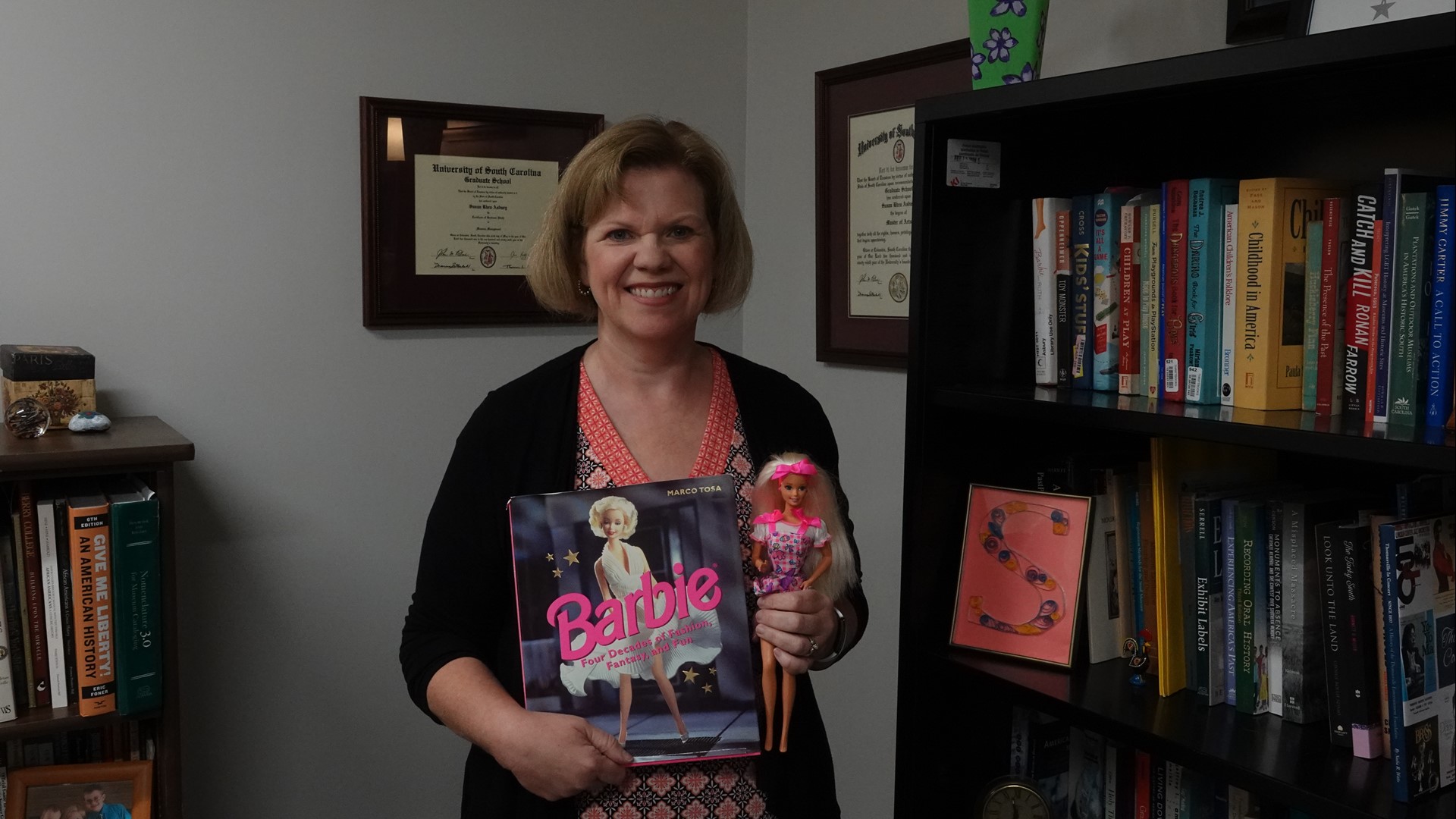MACON, Ga. — With the new Barbie movie dominating the box office, one local professor of history shares how the doll has progressed through the decades.
Dr. Susan Asbury is an assistant professor of history at Middle Georgia State University, and in the early 2000's was the associate curator of modern dolls at the Strong National Museum of Play in Rochester, N.Y.
She says Barbie has changed through the decades, but she has always been an icon of imagination and inspiration for women.
"As a doll, I really think she is about imaginative play - the sky's the limit," Asbury explained. "In addition to the fashion consciousness piece, they've also made Barbie this independent woman who has her own house and has multiple cars and other property, and works in a variety of capacities."
With the array of jobs that Barbie has had, she has also helped women expand their horizons and shoot for the stars.
"She's had over 200 careers, most recently in a lot of stem fields as well, and tries to represent the expansion of women in the workforce," Ashbury said.
Barbie was created in 1959 by Ruth Handler, and Barbie has changed the industry. No longer were baby dolls the only option. Barbie was a career woman who could be anything.
"At the time that she came, she really offered a different kind of play for little girls who had been accustomed to baby dolls and companion dolls... She was much more future-oriented," Ashbury said. "I think that was sort of her hallmark on the industry when she arrived."
Within a year of her introduction to the market, Barbie became the biggest-selling fashion doll of all time. Sales surged, and around 2 years after her debut, Ken hit the shelves.
While Barbie has been criticized by some for body image presentations, she has always stood for the development and independence of women.
According to the Strong Museum of Play, Mattel had "developed a commitment to boosting girls’ self-esteem and gave Barbie a cosmopolitan sense and expanded career options. African American and Hispanic-American Barbies appeared in 1980, an Eskimo Barbie in 1982, a Hawaiian Barbie in 1983, and a Chinese Barbie in 1993. Over the years, Barbie changed jobs more than 75 times, becoming a dentist, a paleontologist, an Air Force fighter pilot, a World Cup soccer competitor, a firefighter, and a candidate for President."
The Barbie movie touches on her progress and shows how the doll fits into modern culture.
"Barbie could be re-imagined and be a part of whatever's happening culturally, so Barbie is on all social media platforms, and she's been in movies like this one, and video games," Ashbury said. "I think that Mattel will continue to do that while also balancing the nostalgic factor of Barbie."
The movie plays on themes of gender and how Barbie is viewed in our world, while also calling back to some classic Barbie looks and characters.
Director Greta Gerwig is able to present ideas of patriarchy and gender expectations through Barbie, all while keeping the nostalgia of her original design.
"Larger conversations about patriarchy and feminism are framed around this doll," Ashbury said. "I think that's what this movie can do for those who see it, is frame these bigger conversations we have about everyone working in society and trying to make society better within these frameworks of the doll."
Since Barbie is being presented in a new light, the Barbie movie will impact future generations and how they see the iconic doll.
If you want to check out the movie for yourself, don't worry! You still have time to get to know Barbie and all her friends and do a little bit of research into her past before you see her on the big screen.

